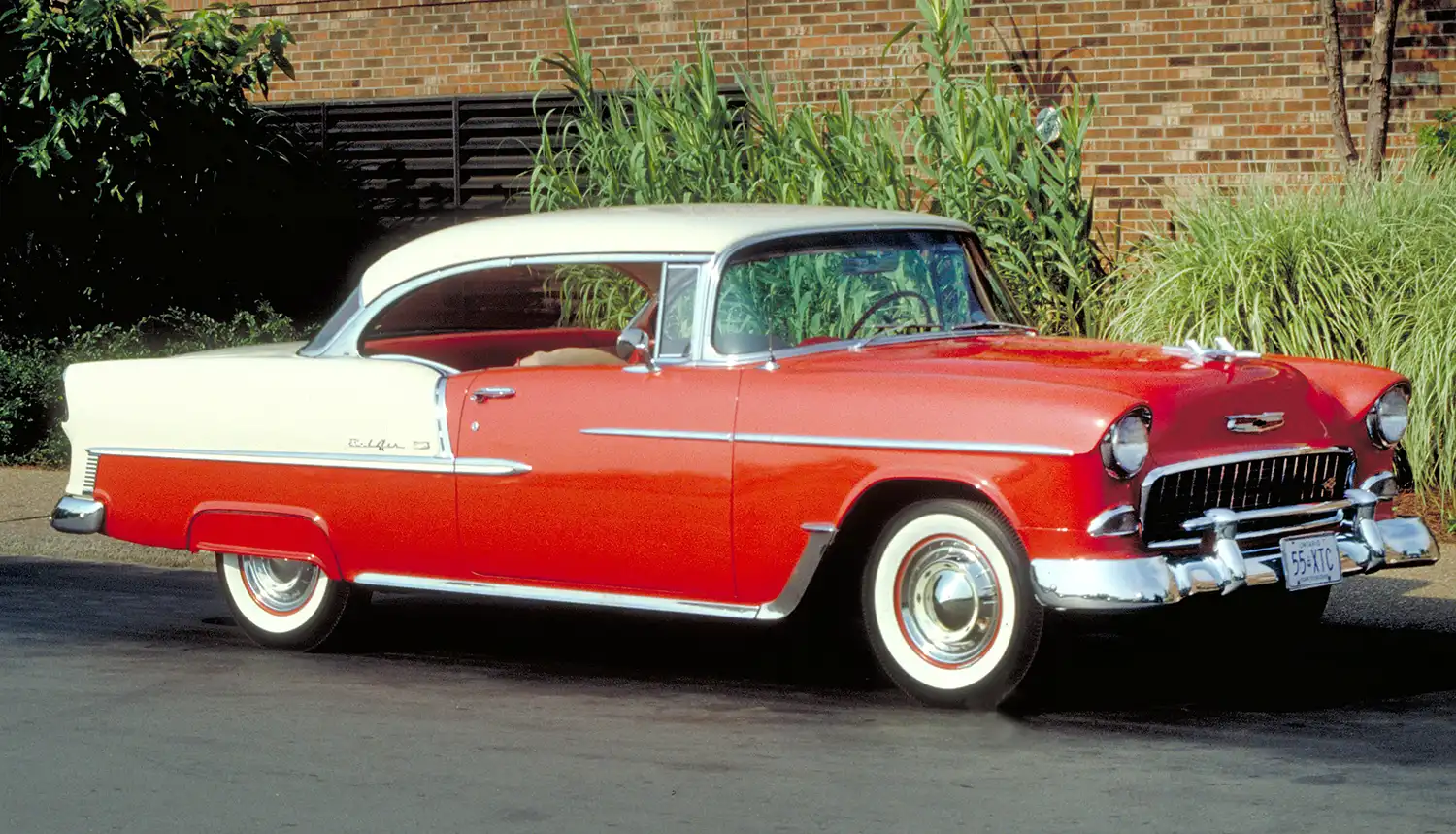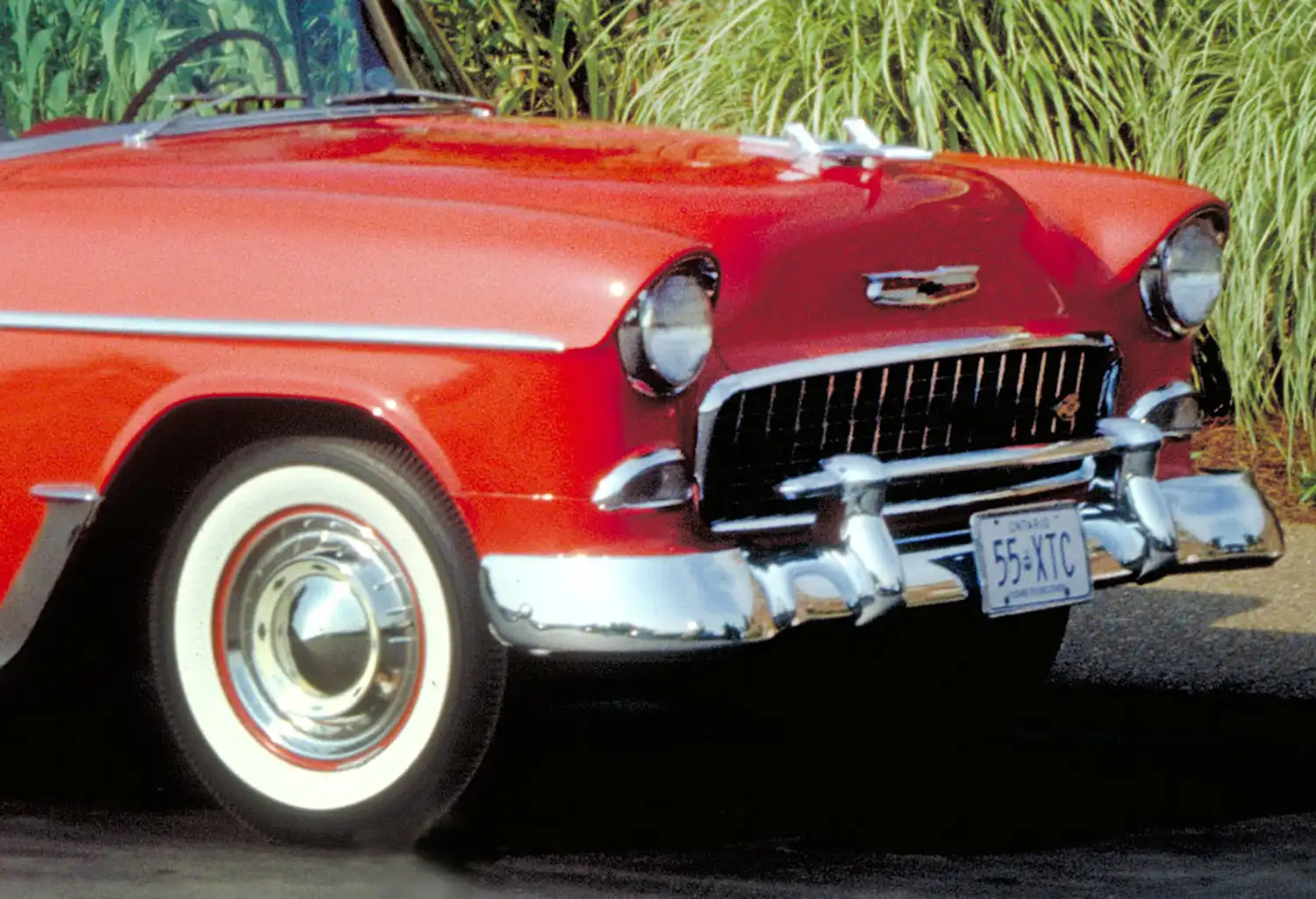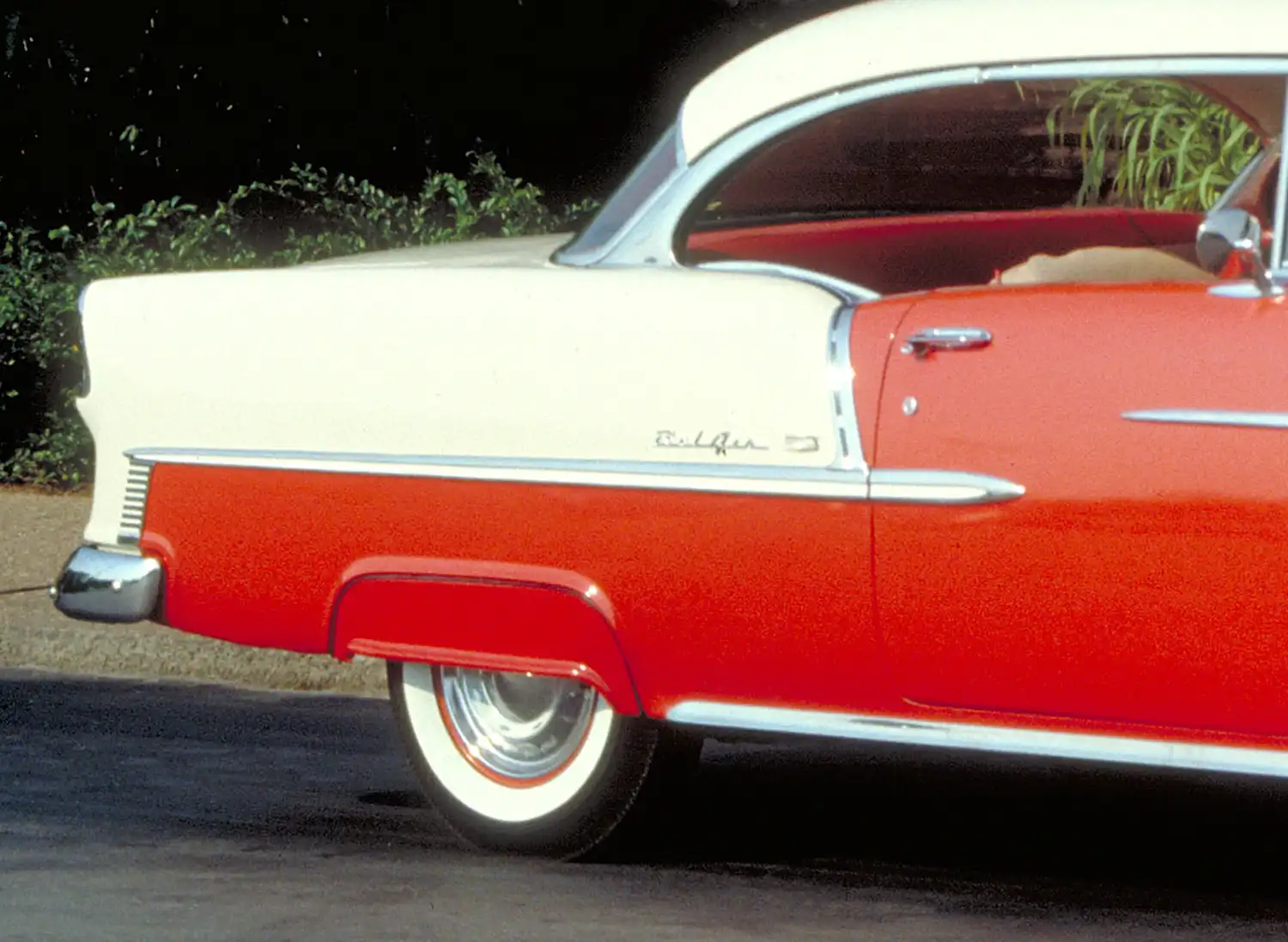
The 1955 Chevrolet Bel Air Sport Coupe stands as a cornerstone of American automotive history, a shining star in the celebrated “Tri-Five” era (1955-1957) of Chevrolet models. Introduced as part of a completely redesigned lineup, the Bel Air immediately captured the public’s imagination with its modern styling, powerful engine options, and a sense of optimism that defined the mid-1950s. The Sport Coupe, with its sleek hardtop design devoid of B-pillars, epitomized the era’s glamour and remains a highly sought-after classic car, symbolizing a pivotal moment in automotive design and American culture.
Design Revolution
The styling of the 1955 Bel Air was a radical departure from its predecessors, ushering in a new era of sleekness and modernity. Under the direction of Harley Earl, Chevrolet designers penned a car with clean lines, a low-slung profile, and distinctive styling cues that set it apart. The Sport Coupe model, in particular, with its wraparound windshield, prominent tailfins (albeit smaller than later years), and the absence of a B-pillar when the windows were down, offered an airy and sophisticated look. The use of bright chrome accents along the body side, window frames, and grille further enhanced its visual appeal, making it a true standout on the road. The two-tone paint options, a popular choice at the time, accentuated the Bel Air’s stylish contours and allowed buyers to personalize their vehicles.
Power and Performance
The 1955 Bel Air offered a range of engine options, but it was the introduction of the new 265 cubic inch “Turbo-Fire” small-block V8 engine that truly marked a performance turning point for Chevrolet. This modern overhead valve V8 was lighter and more powerful than the aging inline-six it replaced as the top engine choice. Initially producing around 162 horsepower (with a two-barrel carburetor), the V8 provided the Bel Air with spirited performance that appealed to a broader range of buyers. For those seeking even more power, a “Power Pack” option increased the V8’s output to approximately 180 horsepower through a higher compression ratio and a four-barrel carburetor. This availability of a potent and relatively affordable V8 engine played a significant role in the Bel Air’s popularity and its association with the burgeoning hot rod culture of the time. Transmission choices included a standard three-speed manual, an optional overdrive unit for better fuel economy at highway speeds, and the smooth-shifting two-speed Powerglide automatic transmission.

Interior Comfort and Features
The interior of the 1955 Bel Air Sport Coupe was designed with both style and comfort in mind. The spacious cabin offered ample seating for six passengers. The dashboard featured a clean and functional layout, with a prominent speedometer and gauges housed in a stylish binnacle. The use of high-quality materials, including durable fabrics and vinyls, contributed to a sense of quality. Available features included power windows, power steering, power brakes, and air conditioning (a relatively new option at the time), adding to the car’s appeal as a comfortable and well-equipped vehicle. The stylish steering wheel and the overall design of the interior reflected the optimistic and forward-looking spirit of the era.
Cultural Impact and Legacy
The 1955 Chevrolet Bel Air Sport Coupe transcended its role as mere transportation to become a cultural icon. Its striking design and association with the dawn of the powerful and affordable V8 engine cemented its place in American hearts. The Bel Air became a symbol of the 1950s, often featured in movies, television shows, and popular music, representing the freedom and prosperity of the post-war era. Its enduring popularity is evident in its continued desirability among classic car collectors and enthusiasts worldwide. The ’55 Bel Air’s influence on automotive design is undeniable, and it remains a benchmark for style and a testament to Chevrolet’s engineering prowess during a transformative period in automotive history. The Sport Coupe model, with its sleek hardtop styling, is particularly prized for its aesthetic appeal and its embodiment of the era’s glamorous spirit.
Disclaimer: Esteemed automotive enthusiasts, please be aware that the details presented herein are intended for general informational purposes and are based upon the most reliable information accessible. Potential admirers are encouraged to conduct their own thorough investigations to ensure complete satisfaction.
Source: Chevrolet
AI Assistance: Gemini
